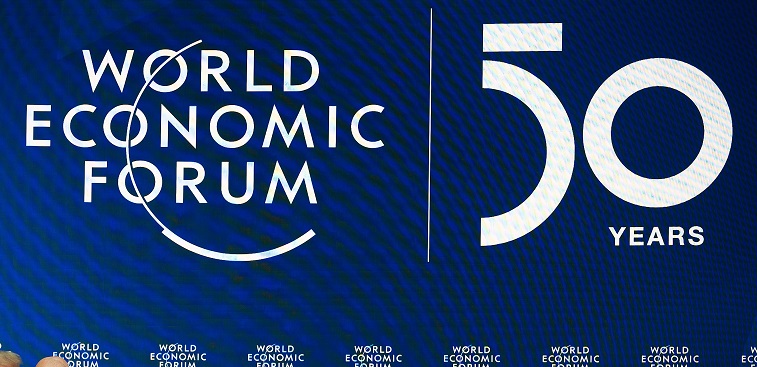This year was the 50th anniversary of the World Economic Forum, commonly called Davos, which convened nearly 3,000 people representing 117 countries. As we stand at the brink of a new decade, my experience at WEF was a reminder of both the promise and the peril of the disruption that is happening.
The Fourth Industrial Revolution, or 4IR — a term coined by WEF — is the coming together of “new technologies that are fusing the physical, digital and biological worlds, impacting all disciplines, economies and industries”. These changes will fundamentally impact what work humans do and disrupt many existing structures and systems. According to McKinsey estimates, 375 million workers globally (14% of the workforce) will need to transition to new occupational skill sets.
Beyond this, virtually every one of us will need to integrate the 4IR technologies into our skills, workplace and lives. This disruption has great promise, as it can help us solve some of the most meaningful issues for our planet (climate change, poverty, disease). Equally probable is the peril, including technology advancing faster than the ethical and regulatory frameworks to manage it, as well as widening income and opportunity gaps between the haves and have-nots.
The WEF focused on two bold manifestos in this year’s meeting: The manifesto for climate change (to plant 1 trillion trees), and the manifesto to create opportunity for 1 billion people by 2030. Given my focus on helping leaders evolve and thrive in disruption, my focus is on the latter.
I ask myself: How can we work together to ensure that the promise of this disruption outweighs the perils? The responsible adoption of 4IR technologies requires radical inclusion of each of us as stakeholders in an increasingly connected and interdependent world. It will require leaders, particularly in key decision-making roles, to evolve our mindsets, skill sets, values and behaviors if we are to all thrive in this disruption, rather than just a few.
Here’s what leaders of the future will need to do better:
Radical inclusion, listening and addressing the needs of multiple stakeholders and finding creative solutions by including all voices
No institution or individual alone can address the economic environmental, social and technological challenges of a complex, interdependent world. In one of the forums I attended, Microsoft CEO Satya Nadella talked about his own goals and compensation plan. He talked about including performance metrics (financial returns) and power metrics (those related to meeting the needs of different sets of stakeholders such as customers, employees and communities that drive the long-term sustainable health of any organization).
The question to ask yourself: How are you including the voices of your stakeholder network in how you measure your results?
Shared responsibility and collaboration across an ecosystem
WEF plays a key role in creating public-private partnerships across ecosystems so all stakeholders can help to shape policy, create frameworks to operate effectively at scale and share learning. More than ever, consumers and employees are expecting the companies they engage with to be global citizens who are good stewards of the planet and a force for good in their industries. Microsoft announced that, by 2030, it will be carbon-negative. Many WEF member companies and governments have signed the manifestos on the future of work and the reskilling revolution, as well as climate change. Goldman Sachs announced it will not take a company public unless it has at least one board member that is diverse.
The question to ask yourself: What is a challenge or problem worth solving in your workplace or industry that inspires you? How do you rise above your day-to-day tasks to collaborate with others who are inspired to solve this challenge? How can you grow your skills in collaborating with others both inside and outside your organization?
Learning and humility
Accenture CEO Julie Sweet spoke about how she creates a “learning board” and agenda for herself every quarter. In this learning board, she shares transparently with employees what she’s focused on learning. She role models both a learning culture as well as humility. SAP co-CEO Jennifer Morgan role-modeled humility, sharing an experience of failure. Microsoft Executive Vice President Peggy Johnson shared how deep listening has transformed their culture. With the relentless change that confronts us, we each need to develop deep humility, curiosity and a strategy for how best to learn. The Boston Consulting Group did a study on the global workforce and found that 65% of people globally are reskilling themselves.
The question to ask yourself: What’s your plan and practice to stay learning? How do you create a culture of learning in your team and organization? What do you need to unlearn?
Navigating uncertainty
PwC released its 2020 survey of over 1,500 CEOs, which pointed to low CEO confidence in economic growth. Low CEO confidence is a predictor for a decline in GDP growth in 2020. Among the top 10 threats are the availability of key skills (38% of CEO are extremely concerned about this) and speed of technological change. While CEOs determine how to deal with the challenges of a complex mix of technology, geopolitical and economic threats, we as individual leaders need to proactively review and manage the risks in our ecosystems.
The question to ask yourself: What are the sources of uncertainty in my ecosystem? How can I learn to lead in uncertainty and help others do that?
Henna Inam is the CEO of Transformational Leadership Inc. and the author of “Wired for Authenticity.” She helps leaders thrive in disruption as a C-level executive coach, speaker, and board advisor. Follow Inam on LinkedIn and her blog, where she’s creating a community that is passionate about leading in disruption.
If you enjoyed this article, sign up for SmartBrief’s free e-mails on leadership and business transformation, among SmartBrief’s more than 200 industry-focused newsletters.
